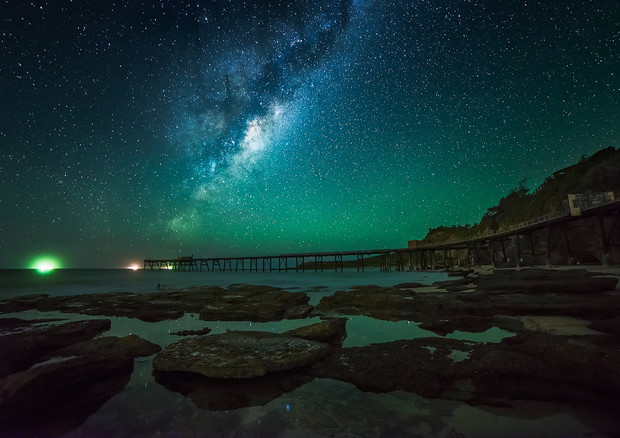Exoplaneta LHS 1140b gira em torno de estrela a 39 anos-luz.
Ilustração mostra a estrela LHS 1140 e seu exoplaneta LHS 1140b (Foto: M. Weiss/CfA)
A última edição da revista “Nature” apresenta a descoberta de LHS 1140b, um planeta que circunda a estrela LHS1140, na constelação de Cetus, a 39 anos-luz de distância do nosso Sistema Solar, e apresenta características que o tornam um forte candidato para que os cientistas o explorem mais detalhadamente atrás de evidências de vida extraterrestre.
A órbita do planeta é vista praticamente de perfil aqui da Terra e os cientistas são capazes de analisar detalhes de sua composição quando ele passa em frente à LHS1140, bloqueando um pouco de sua luz, o que acontece a cada 25 dias.
Para a existência de vida da forma como nós a conhecemos, um planeta deve ter água líquida na superfície e manter uma atmosfera. O planeta LHS1140b está no meio da chamada “zona habitável” de sua estrela, onde é possível existir água líquida.
A LHS 1140 é uma anã vermelha, menor e mais fria do que o nosso Sol. Assim, embora o LHS 1140b esteja dez vezes mais próximo da sua estrela do que a Terra do Sol, ele recebe apenas metade da luz solar que recebemos aqui. Quando estrelas vermelhas anãs são jovens, elas emitem uma radiação que pode ser prejudicial para as atmosferas dos planetas que as orbitam. Mas, no caso da LHS1140, sua radiação é menor que a de outras estrelas de pouca massa.
Maior que Terra
Os astrônomos estimam que a idade do planeta deve ser de pelo menos 5 bilhões de anos. Eles também concluíram que ele tem um diâmetro 1,4 vez maior do que o da Terra - quase 18 mil quilômetros. Mas com uma massa em torno de sete vezes maior que a Terra e, portanto, uma densidade muito maior, isso implica que o exoplaneta é provavelmente feito de rocha, com um núcleo de denso de ferro.
O tamanho grande do planeta significa que ele pode ter tido um oceano de magma fervente em sua superfície por milhões de anos. Este mar fervente de lava poderia produzir vapor para a atmosfera muito tempo depois que a estrela perdeu brilho, reabastecendo a superfície do planeta com água.
Para os autores, esta super-Terra pode ser o melhor candidato para futuras observações para estudar e caracterizar sua atmosfera, se ela de fato existir. "É o exoplaneta mais emocionante que vi na última década," disse o autor principal Jason Dittmann do Centro Harvard-Smithsonian de Astrofísica. "Dificilmente poderíamos esperar um alvo melhor para realizar uma das maiores procuras da ciência - buscar evidências de vida além da Terra".
"As condições atuais da anã vermelha são particularmente favoráveis - a LHS 1140 gira mais lentamente e emite menos radiação de alta energia do que outras estrelas similares de baixa massa", explica outro membro da equipe, Nicola Astudillo-Defru, do Observatório de Genebra, na Suíça.
www.g1.globo.com



